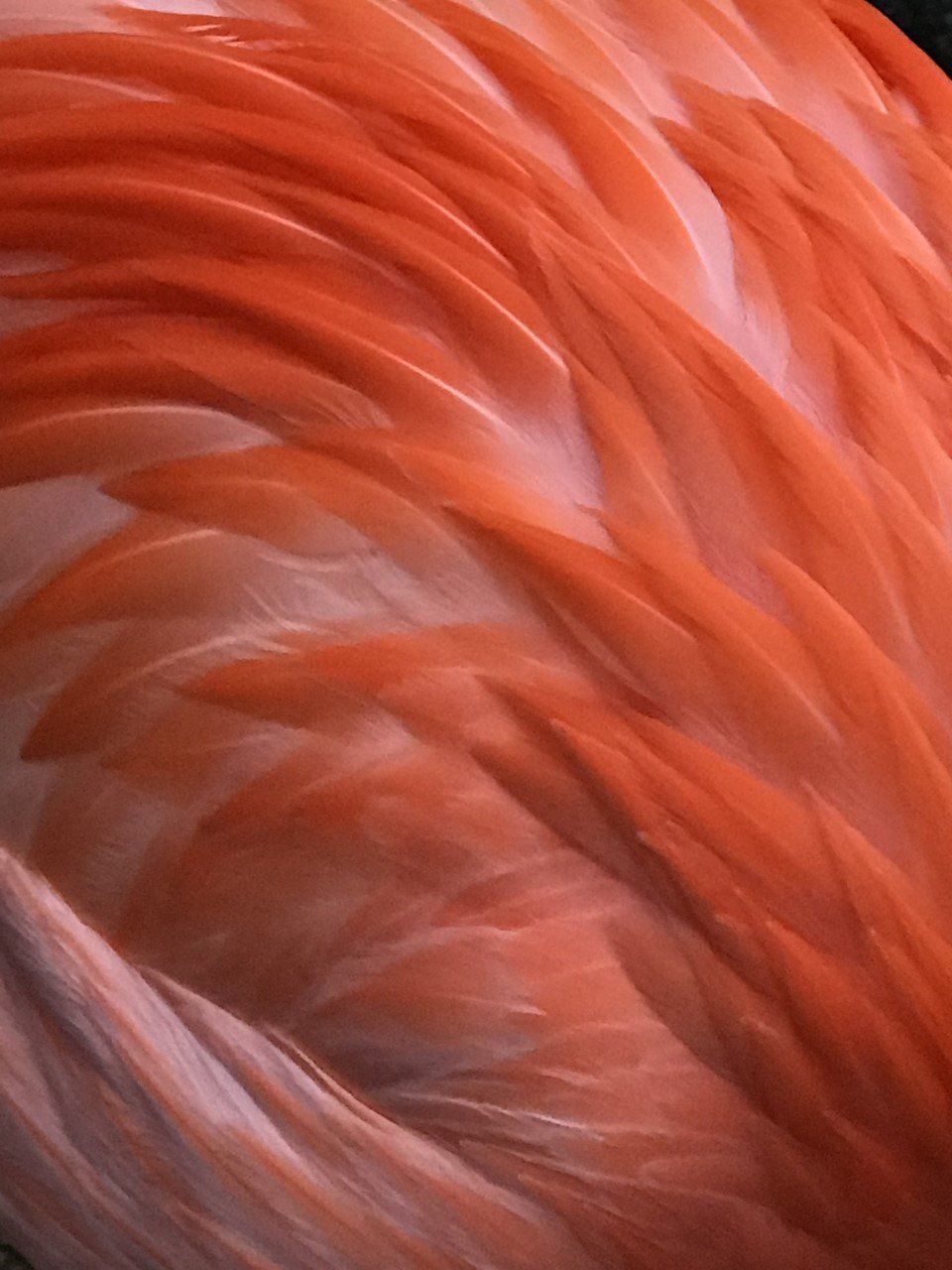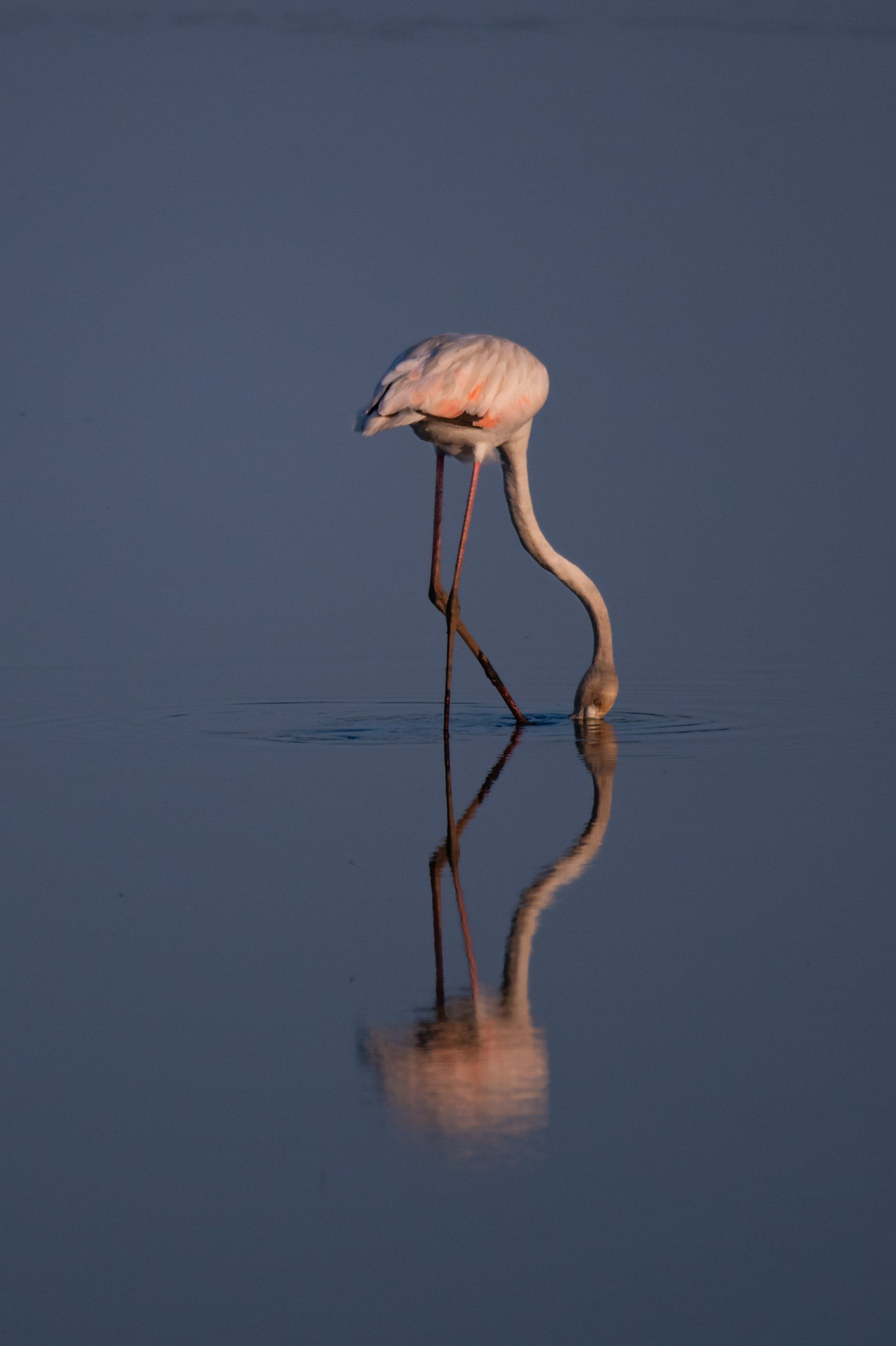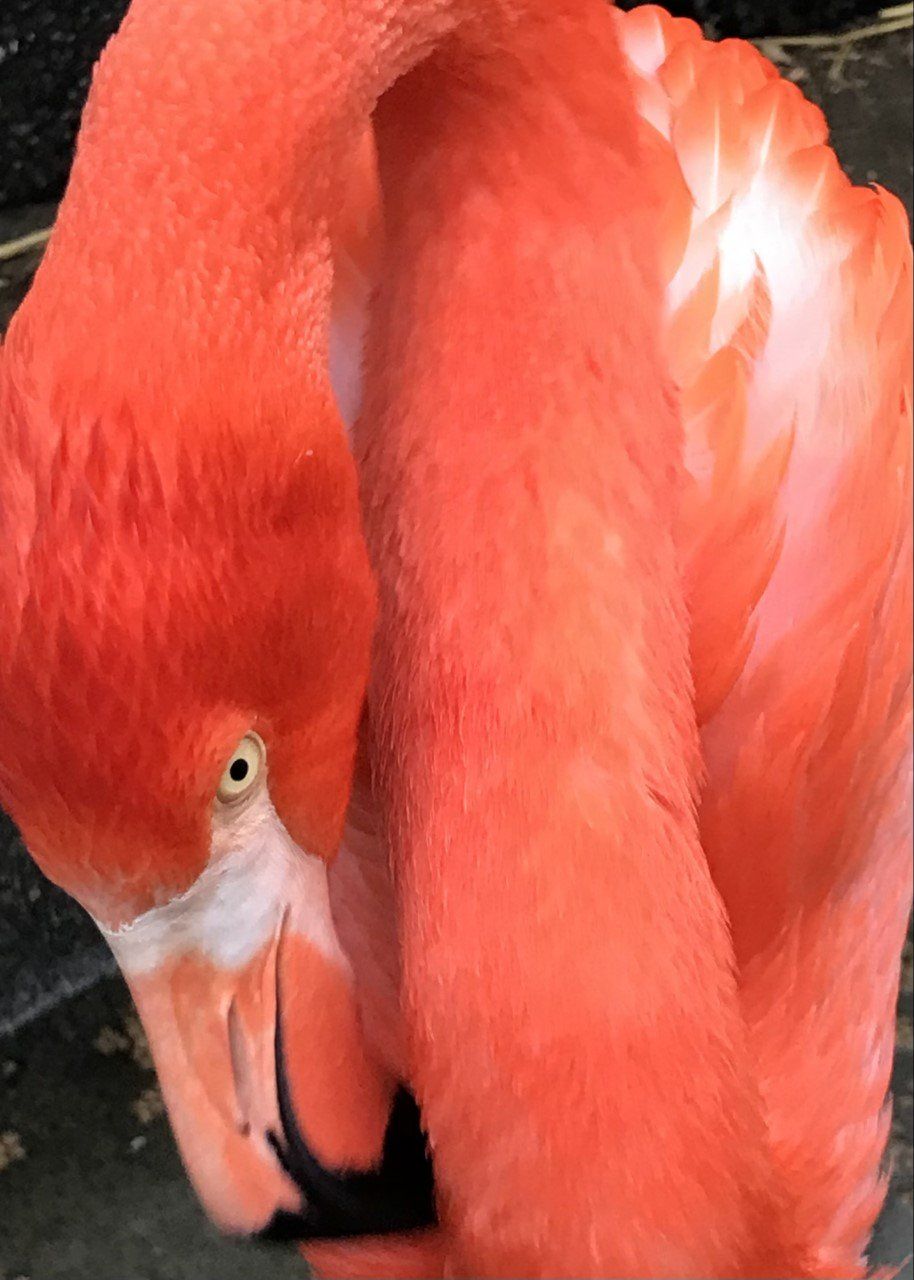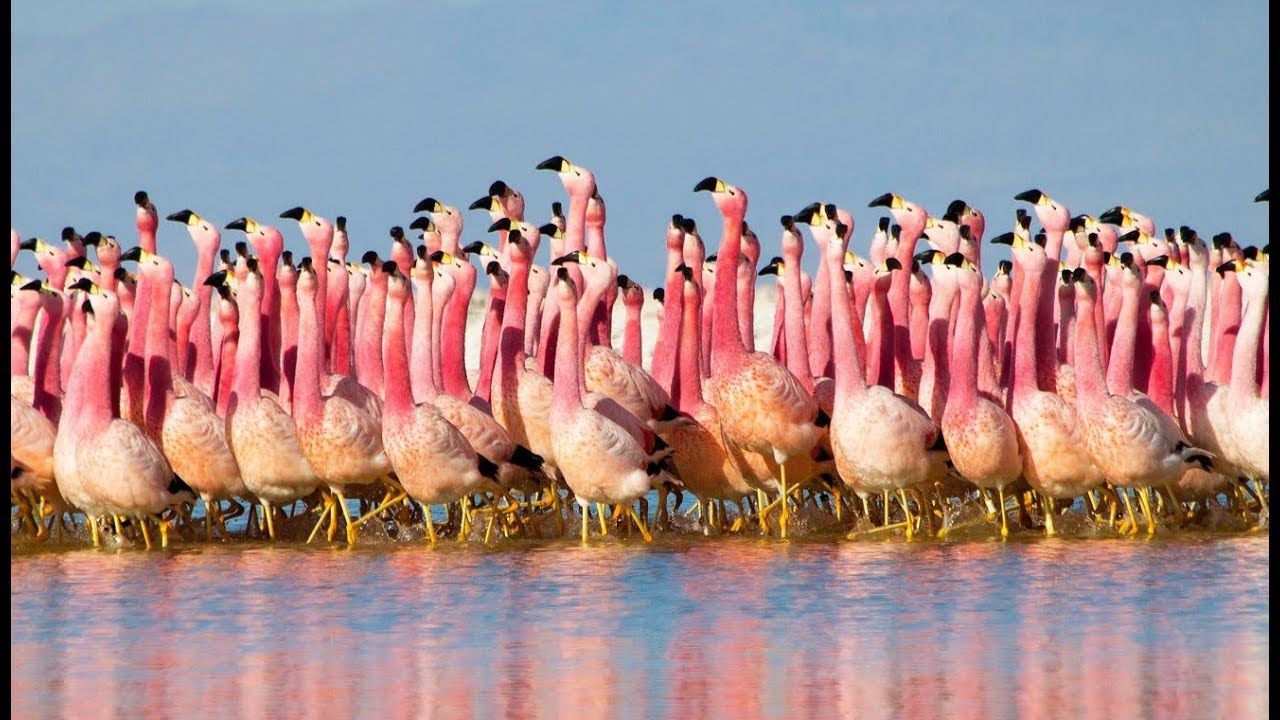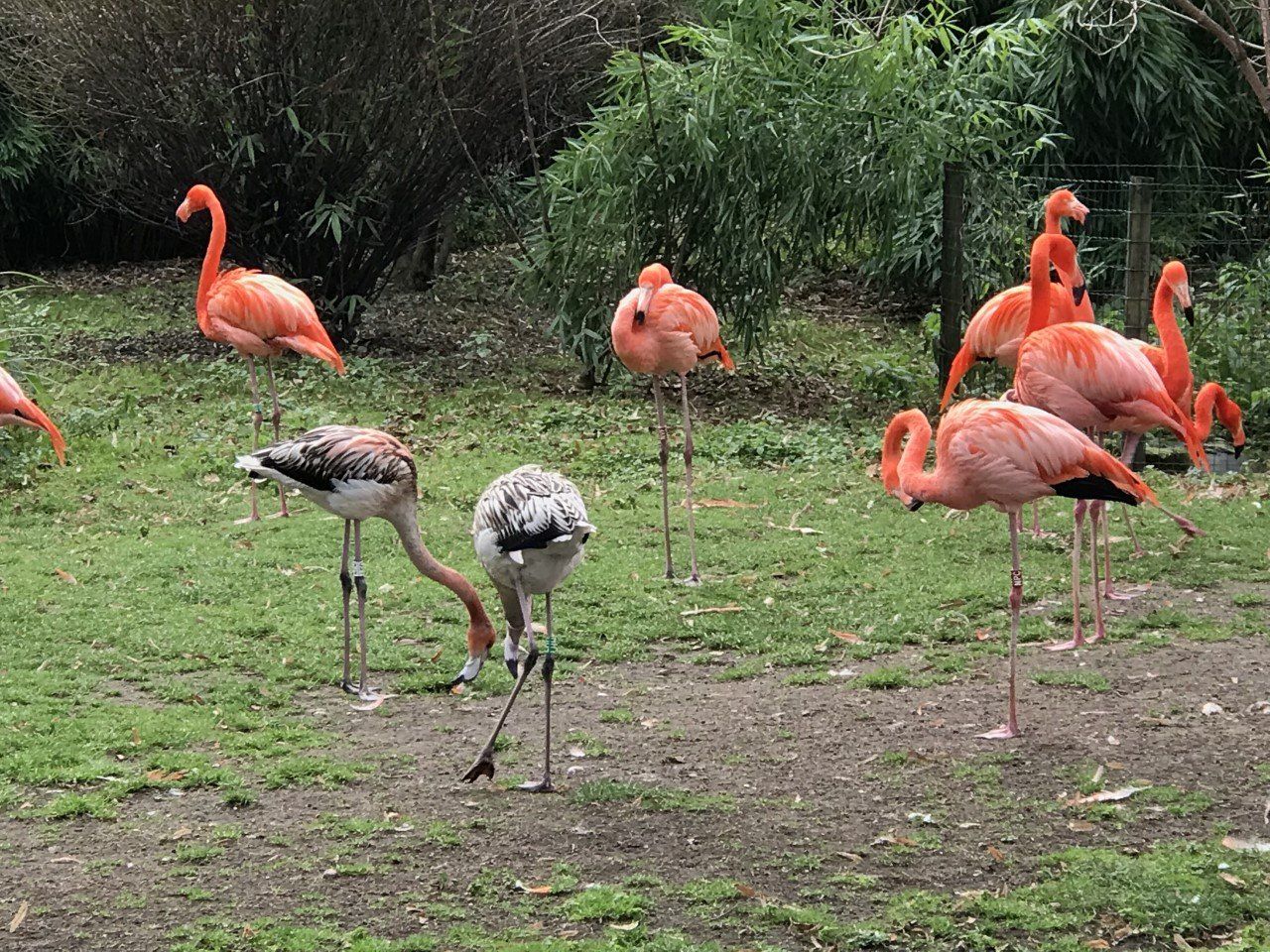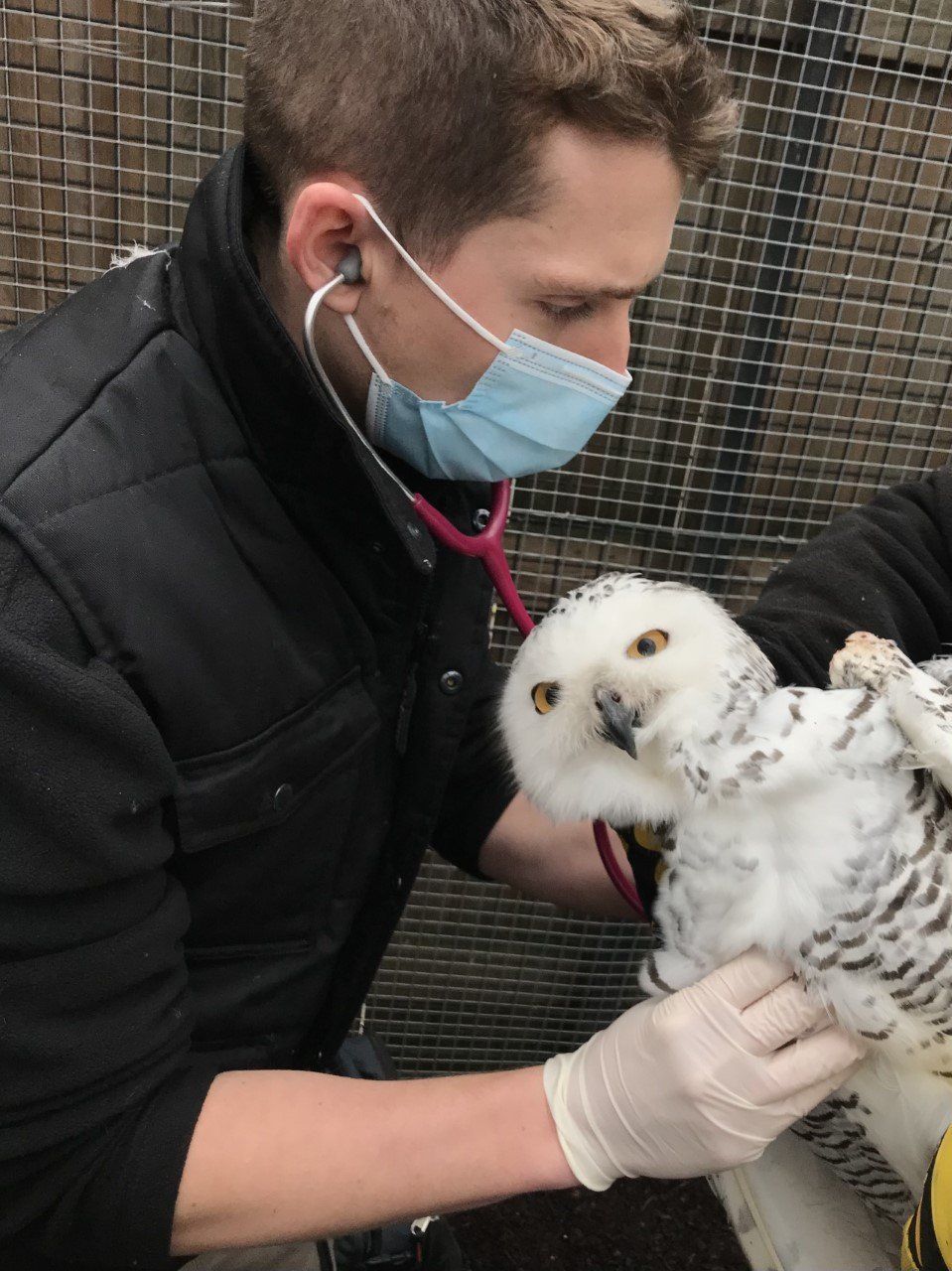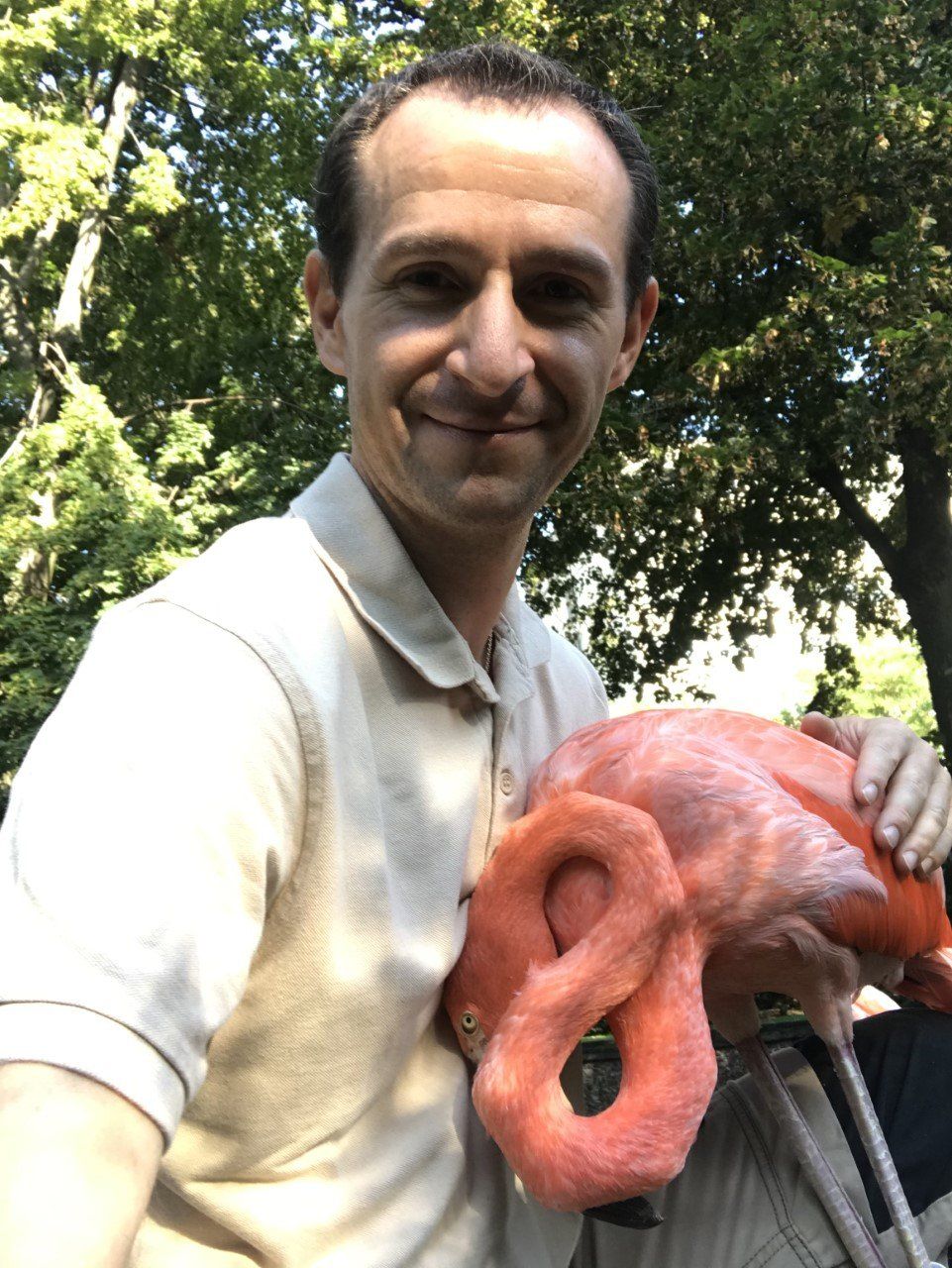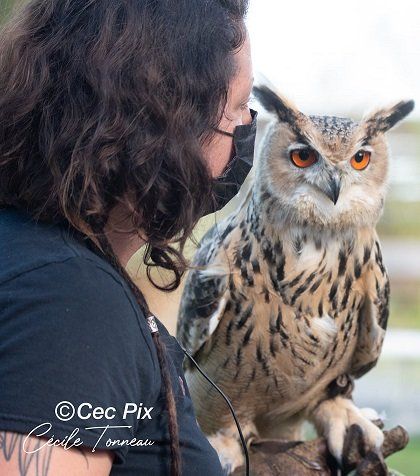The pink flamingos
These elegant migrants with a unique color.
A flamboyant bird!
The main threat: the disappearance of wetlands...
Flamingo Anatomy
This one-of-a-kind wading bird is a compendium of stork, heron and geese! Nature has endowed it with equipment adapted to its environment. And to find its food, a unique beak, like a whale!
The paws
This slender bird has two long, slender legs so that it can search for food at a certain depth of water. The articulation of the "knees" is reversed in order to allow him a better propulsion during his race during his flight and in order to absorb the shocks on landing. It is equipped with webbed feet, four fingers, which allow it to find its food by trampling the mud. These webbed feet also allow it to pack down the mud when building its nest. Flamingos sleep in the water on one leg or even lying on dry land. Juveniles have gray legs, adults pink.
Photos: Greater Flamingos and Caribbean Flamingos
S. Goutenègre, JC Rivas
The neck
Long de près de 90 cm chez les mâles, le cou des flamants est très souple. Il leur permet de plonger la tête dans des eaux assez profondes pour filtrer la vase avec leur bec. Le cou leur sert également de balancier de par sa taille disproportionnée comparé au reste du corps. Lors des parades nuptiales, plusieurs postures du cou sont décrites, notamment lors d’agressivité. Quand le flamant dort, il a la capacité de retourner complètement son cou vers l'arrière pour enfouir sa tête dans les plumes du dos. En vol, le cou et les pattes du flamant sont étirés à l'horizontale.
Photos : JC Rivas/ S. Goutenègre
Wings
Flamingos are equipped with wide and long wings in order to carry them over long distances during their migration. Capable of flying at nearly 60 km/h, their powerful black-tipped remiges regenerate during moult. During courtship, several postures using their wings are described. During baths, flamingos use their large wings to moisten their entire plumage.
Photos: JC Rivas. Great flamingos at the Orx marshes, in the Landes.
Feathers
We can classify flamingo feathers into three categories:
The short feathers/down of the head and neck, very tight, which allow good impermeability when the flamingo has its head in the water. The feathers of the wings, long and powerful. The back feathers, soft and long, which they ruffle during courtship displays and in which they bury their heads to sleep. The chicks are born covered with a white down, the full adult plumage occurs around the age of 3 years.
Photos: S. Goutenègre. Caribbean Flamingos.
Un bec unique!
These unique looking birds also have a unique beak!
They have one of the most effective filtration tools! Flamingos spend a very large part of the day looking for their food in lakes, deltas and marshes with brackish and salt water. Their beak, shaped like a Basque pelota chistera, is made up of a serrated lower and upper mandible. The water passing through these "little teeth" is filtered like a whale with its baleen (see diagram). The flamingo constantly clicks its tongue, which is itself covered with small hairs on its surface, in order to filter and swallow nutrients while rejecting excess water through its beak.
They are able to submerge their entire head underwater to find food deeper.
At birth, the chicks have a straight beak. It will start to curve after a few months.
In addition to feeding, the beak's main function is grooming. Flamingos take long moments to maintain their plumage using their beak, they preen their feathers.
The beak is also used for building the nest. The males and females will take clay and salty mud into their beaks, which they will knead and regurgitate to form a fairly high dome.
Photos: S. Goutenègre/ JC. Rivas
Beak illustration: Nicolas Primola
Cuban flamingos feeding. Video: S. Goutenègre
A life in a colony...
Flamingos are gregarious birds, whose social life is quite intense. These birds have a very long lifespan, up to 60 years in captivity. All their life, they maintain strong social ties with their group.
Couples make and break each year, which gives way to a rather impressive courtship. Both gauge each other as they enter a ballet composed of lateral head movements accompanied by rather noisy vocalizations. Postures of the neck, wings, as well as chases are described to make yourself the most beautiful and the strongest. The males tend to show off, growing taller and walking with a very superior and precious air... Some bickering occurs but without much malice. It is very difficult to differentiate the male from the female, although Mr can be a little larger, but not all. There are reproducers and others not.
The pink flamingos reach their sexual maturity around the age of 3/4 years, they will then display their definitive pink livery.
During spawning, females and males will build their nest very close to each other, much like a nursery. The nest is composed of clayey mud, in the shape of a dome with a hollow top, about 50 centimeters high. The female will lay 1 single egg and will take turns hatching it with the male for 31 days. It is proven that homosexual couples form, being able to even feed chicks of other couples.
As for the chicks, they are born covered in white down, with rather disproportionate pink legs. Their beak is straight. They are fed by the parents with a rich concentrate. As they grow, they turn gray with a few remiges that appear after a few months. The beak then begins to curve in order to start eating by itself and filtering the water.
Flamingo colonies can be very large, up to 500 individuals! Some of them leave the colony to make another one. Flamingos are fairly loyal to their wintering grounds, but also to the sites where they are resident, such as the Camargue for example. They generally have a coastal migration and flight in close rank, neck and legs outstretched.
Photos: S. Goutenègre/ JC Rivas. Greater flamingos, Cuban flamingos at nest, group of Chilean flamingos.
Colonize new spaces!
Flamingos form large colonies which sometimes push them to colonize new spaces. This is the case in the South West of France, at the Marais d'Orx, in the Landes. Flamingos never before referenced
in the region, have been established since 2021. The association follows this colony.
Orx Swamp Population,
in the Landes
In September 2021, the association, together with the agents of the Marais d'Orx, noted the arrival of a group of 21 young pink flamingos, not ringed and so far never referenced in the region. This is a great first for the marsh which already hosts a wide range of species, i.e. 250 species of birds, such as egrets, herons, storks, spoonbills, cormorants... We offer our collaboration and our professional expertise on the flamingos to the reserve.
The marsh, formerly drained, exploited and managed, is divided into 3 parts. The site, now belonging to the Conservatoire du littoral, has become wild again, to the delight of amateur and professional ornithologists alike.
This group of juvenile flamingos less than about 3 years old is accompanied by a single adult. It is known that juvenile flamingos are raised in nurseries, guarded by a few adults. They have established themselves in the shallowest part of the swamp and seem to like it there. We weren't sure if they intended to stop over or put their bags down. They finally spent the winter there and are still present to this day!
The level of the marsh being controlled by the agents of the site, a constant flow of water allows the flamingos to find their food there. We have seen some interactions with spatulas.
It seems that the flamingos are indifferent to the presence of visitors. The observation platforms set up by the reserve still allow them to be preserved from the presence of humans.
The site seems to be suitable for this group which tends to settle permanently. It remains to be seen whether in the future they will migrate or become sedentary. Global warming, especially with milder winters, could explain why flamingos no longer migrate to warmer regions.
Photos: JC Rivas/ S. Goutenègre
Videos of flamingos at the Marais d'Orx, Landes
By Jean-Charles Rivas. All rights reserved
La grippe aviaire : une menace constante.
An increasingly recurrent threat has affected the various species of birds in France and Europe in recent years: avian flu.
Duck breeders have had the bitter experience of this with the culling of many farms in 2020, 2021 and 2022. Avian flu is carried by the various migratory species.
The flamingos newly implanted in the Orx marsh could carry it and succumb to it. Among the 21 individuals counted on their arrival, one died. We were unable to determine the cause of death. This disease could be devastating for this fragile group. The year 2022 was marked by two successive waves of avian flu.
In general, the public and health policies recommended in the face of this threat are the systematic slaughter of domestic species and not vaccination.
In captivity, as in zoos, rare and endangered birds are vaccinated against bird flu.
Photo: Group of greater flamingos at the Orx marsh, Landes. S. Goutenegre
Why breed these species in captivity?
Here are the reasons why it is sometimes necessary to breed certain species!
01
Parents don't brood.
It is not uncommon for some parents not to incubate their eggs, especially in captivity. They must then be removed to incubate them artificially.
02
Avoid egg predation.
In captivity as in the wild, the eggs are coveted by predators such as rats or foxes. The eggs must then be removed to save them and incubate them artificially.
03
L'espèce est en danger ou éteinte in situ.
Today many bird species are threatened with extinction. Participation in breeding programs helps maintain a genetically viable population in captivity. The example of the extinct Spix's macaw or Edwards's pheasant in situ.
04
Participate in reintroduction programs.
The most threatened and precious species are sometimes reintroduced into their environment. This saved the griffon vulture in France, the condor in the United States and the Spix's macaw in Brazil.
Group rearing, preparation for nesting.
When the mating season approaches, the group is in turmoil. The parades and their synchronized dances begin. We must then prepare for them the necessary for their nest (mixture of earth, peat, salt, gravel). Once mated, the parents will make a hollow domed mud nest where the female will lay a single egg! Both parents incubate in turn... or not. That's where we come in!
Photo: The parents incubate their unique egg! Cuban Flamingos.
S. Goutenègre/ MNHN
Artificial incubation.
L'oeuf est désinfecté, pesé puis mis en incubation artificielle ou un suivi journalier nous indiquera si il y a un début de développement embryonaire, grâce au mirage. Le maintien des paramètres hydrométriques est primordiale pour le bon développement de l'embryon. La manipulation des oeufs doit être très délicate au risque de tuer l'embryon.
Photo / vidéo : Mirage et pesée de l'oeuf.
Sur la vidéo, l'on peut voir le bec du poussin bouger, toute l'équipe le stimule car il entend à traver la coquille!
A. Magnier./MNHN
The birth... the big day!
After 29 precise days of incubation, we can determine the exact date of birth of the little flamingo. He is often on time! It will begin to beak (pierce its shell), which is very energy intensive for the chick. It can take him between 12h to 24h! We are there to stimulate it, to ensure that it does not asphyxiate. It is born still wet with white down. It must then be left in the incubator warm!
Photo: The chick comes out of the egg, it is stimulated, then fed by Aurélie. A. Magnier/ MNHN
Raising the young
The young flamingo will be raised with other small flamingos, as in the wild, where they are raised in a nursery. Feed several times a day, we will be particularly attentive to weight gain and their legs that will need to be stimulated for good development. After several weeks, they will start to come out. and their beak will start to curve. Another delicate step will be to reintegrate them into their group, with their parents, around the age of 2 to 3 months when they can feed themselves. They are still gray, their pink livery will gradually arrive in a few months.
Photo: rearing young flamingos. A. Magnier/ MNHN
Hello Doctor!
Flamingos have a long life expectancy but are not immune to various pathologies.
Dr Pierre Huberdeau, specialist in wildlife at the MNHN, had the opportunity to perform various examinations and surgeries on injured flamingos, and even autopsies. In captivity, the facilities of the veterinary laboratories make it possible to make a fairly rapid diagnosis thanks to state-of-the-art equipment: radiography, ultrasound, endoscopy, blood test, copro, ophthalmological examination...
Since flamingos have particularly fragile legs, frequent foot care is practiced in winter. External factors can intervene such as predation. This was the case, one night in November 2020, with the attack of a fox on the group of flamingos in the Menagerie of the Jardin des Plantes. Several birds were killed and a few injured. An individual with several injuries to the thorax and rump, rib fracture, internal bleeding, was saved when his vital prognosis was engaged. After several surgeries and anesthesia controls, followed a long convalescence isolated from his group. Despite a significant weight loss of 400 g (for a total weight of 2.3 kg), his condition improved after six weeks of treatment. He was able to rejoin his group after 2 months!
The group of flamingos is regularly vaccinated against bird flu, dewormed and feathered. Care is brought to them in winter on their feet which can present cracks and cause lameness.
In short, Doctor and the teams of healers are not idle!!!
Photos: X-ray of a leg on a young flamingo. S. Goutenègre/ MNHN
April 24,
international day of
Flamingo
Discover these fascinating flamboyant birds. Did you know they could live to be 60! Follow our actions and our news at the Marais d'Orx in the Landes, on our Facebook page and our Youtube channel.







